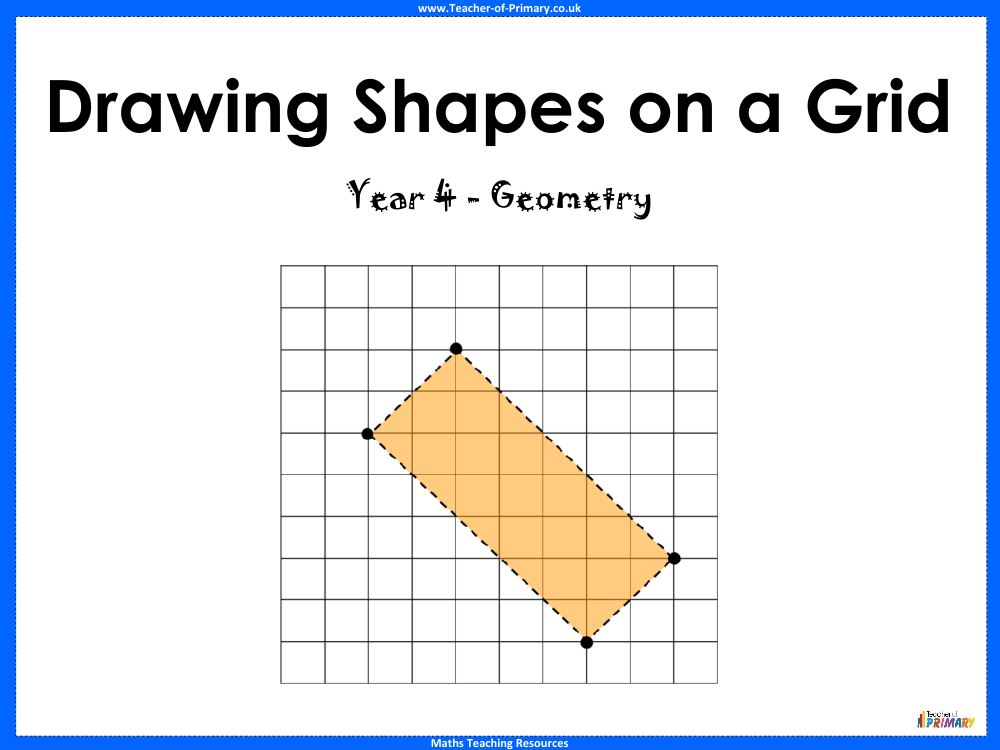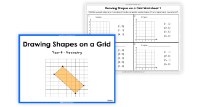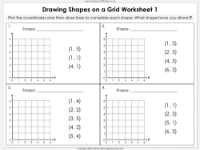Drawing Shapes on a Grid - PowerPoint

Maths Resource Description
In a Year 4 geometry lesson, pupils are introduced to the concept of plotting coordinates and using them to draw complete shapes on a grid. The lesson begins with an explanation of what coordinates are: a pair of numbers that identify the position of a point on a 2-D grid, using an x-axis (horizontal) and a y-axis (vertical). Pupils learn how to record coordinates in an ordered pair, written in brackets, with the x-value (horizontal movement) plotted first, followed by the y-value (vertical movement). The process is likened to entering a house, where one moves 'along the corridor' and then 'up the stairs' to reach a specific point.
The practical application of this knowledge involves drawing lines between plotted coordinates to form shapes. For instance, by connecting coordinates (1, 2), (2, 5), (5, 5), and (4, 2), a rhombus is created. The lesson includes exercises where pupils plot given coordinates and then draw lines to complete shapes such as right-angled triangles, trapeziums, pentagons, parallelograms, rectangles, and squares. Additionally, worksheets challenge pupils to find missing coordinates to complete shapes, with the understanding that there may be multiple solutions. This hands-on approach helps solidify the understanding of how geometric shapes can be constructed using coordinates on a grid.


